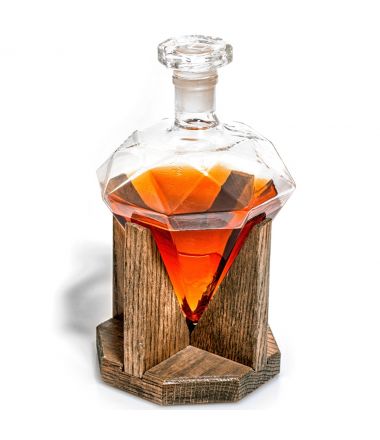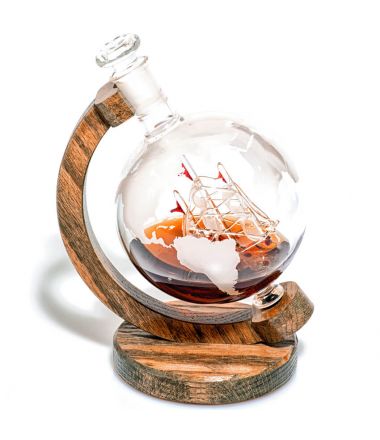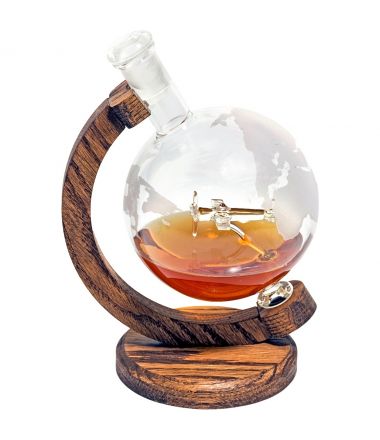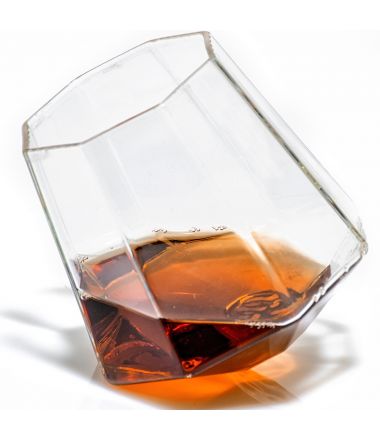
Silky Scotches: Selecting The Smoothest Scotch Whiskies

You know how when you take a sip of typical cheap or “house” spirit, the high alcohol content rips and burns your throat? That’s the opposite of what a “smooth” whisky hopes to achieve. By “smooth,” we mean a spirit that you can drink without needing to use a fire extinguisher to tone down the burn. You want the liquid to go down your throat like satin or silk.
That’s not to say that whisky can’t or doesn’t produce heat in your belly. There’s no better way to warm up on a cold winter afternoon than taking a dram of fine scotch. In fact, Scotch whiskies have been known to heal and warm for hundreds of years. But when we speak about smoothness—or lack thereof—we’re talking about that acerbic burn that feels like it’s taking off the lining of your gullet.
What makes a smooth scotch “smooth?”
There’s no real conclusive, quantifiable way to determine whether a scotch is smooth or not. You might think that measuring the alcohol proof would be a good start, but that’s actually not the case. All scotches have an approximate alcoholic strength of 63.5 percent alcohol by volume; by law it must be 40 percent or higher. However, some scotches are smooth, even with such a high alcohol percentage. It’s impossible to say that higher strength whiskies have more of a burn, whereas lower proof liquors have less. It’s more complicated than that. And it takes some people years to develop a palate that can tell the difference.
Smoothness is one way of measuring the quality of the spirit. So how is “quality” achieved? The heavy lifting is done during the aging process, including selecting the right kind of aging casks and barrels. Length of time is also a factor. As a general rule, the longer the whisky is aged in the barrel, the smoother it will be when you drink it.
There are ways that the master distiller can forcibly cut down on the by-products of distillation that impact the flavor. As part of the distillation process, the operator can separate what is called the “heads and tails” of the product. This is basically separating the good stuff from the bad stuff. The type of still that the distillery uses is one way the operator can achieve this. Whether a distillery recycles the “heads and tails” is another way to cut back on the alcoholic by-product. Some distillers may choose to filter the spirit through some kind of medium, such as activated charcoal, to remove the “tails.” There are hundreds of methods that a brewmaster can employ to try to achieve a “smooth” finish.
Appreciating a fine Scotch whisky comes along with appreciating the process. An expert distiller makes numerous choices that achieve the desired outcome.
Identifying smooth Scotches by the color
One way that you can choose a smooth scotch is by examining the color. This, of course, is difficult to do if the bottle is colored. But take a look at the clear bottles on the merchant’s shelf. The darker and richer colored spirit is usually a good indicator that the scotch has been aged a long time in a wood barrel. This is because the spirit takes on the color of the wood the longer it sits.
The exact color of the spirit will vary depending on the type of wood used in the aging barrel. For instance, if a spirit was aged in a barrel that formerly housed red wine or sherry, it may have a darker and redder tint to it. But a spirit that was aged the same amount of time in a white oak barrel would not be as dark.
Therefore, looking at the color of the spirit is a good indicator, but it’s not a fail-safe method for determining smoothness. (Expert note: Using our beautiful decanters and sipping glasses is a wonderful way to display a beautiful scotch.)
Identifying smooth scotches by the nose
Another way to identify a smooth scotch is by smelling it. When you stick your nose right into the glass, do you get a heavy waft of alcohol? If yes, then you’ve probably got a lower quality spirit on your hands. The higher the quality, and better the smoothness, the more you’ll be able to pick up other aromas without the alcohol dominating the scent.
Scotches come in a wide variety of aromas. Can you pick up on burning wood or char? Fruit? Coffee? Vanilla or caramel? Peat or moss? Salty sea? One reason why Scotch whiskies are so beloved is that the smell of them can transport you to the beautiful lands along the sea.
Too much of a burn? How can you “smooth out” a scotch that has a bite?
There are a few ways that you can forcibly “smooth out” a scotch that has too much bite for you.
Try adding water.
When you have your whisky poured in a beautiful, tulip-shaped glass, try pouring a small amount of distilled water in a separate glass. (You want to use distilled water so that you don’t alter the flavor of your whisky with the extra minerals, sulfur, or fluoride that are often found in tap water.) You also want to keep your water at room temperature, so it doesn’t distract from the whisky itself. Add a small splash of water to thin out the spirit, adding more until it’s at the desired dilution. You can even use an eyedropper to ensure that you don’t add too much water. (Of course, arranging your whisky, water, and decanter on a beautiful, customized tray will keep all of your drinking accessories organized and in one spot.)
You can add ice, but beware!
Yes, of course, you can use ice. But if you don’t drink your whisky pretty quickly, it is soon going to become too diluted. If you are going to use ice, use a spherical ice cube; it will melt at a slower rate than a square ice cube. Sometimes the distraction of the colder temperature is good, to divert your attention from the alcohol in the spirit. If you prefer that, look for whiskey stones—that way you get the temperature change without diluting your alcohol.
Make it a mixer.
There are thousands of recipes for making your whisky into a mixed drink. The easiest way to do this is to add Vermouth, bitters (orange is usually a favorite), or some other sugar-laden additive. Keep in mind that all this does is to mask the flavor of the alcohol and change it into something else entirely.
Add a few tart apples.
Try adding some tart apple to your whiskies, like a Granny Smith or crab apple. The tartness helps to balance out the alcoholic zing.
What are some of the smoothest scotches?
So, what are some of the smoothest scotches available? Try our expert picks!
Ardbeg Uigeadail
Deep smoky notes with luscious, raisin-y tones. Aged in ex-sherry casks. Deepest gold color. Can you pick up the hints of ocean, spices, and Christmas pine needles?
Lagavulin, 16 year old
A pungent malt, this spirit captures the region’s peaty goodness along with some Lapsang Souchong tea and pipe tobacco, with hints of kelp. Notoriously complex.
Glenmorangie, The Accord (Bourbon and Sherry Finish)
A 12-year-old spirit, this whisky has gone through two separate aging/casking processes: first in American oak bourbon casks and then in Oloroso sherry casks. You’ll get some delicious notes of vanilla, cappuccino, toffee, apples, and nutmeg. Can you capture the finishing hints of wood and leather?
Naked Grouse
Offered at about $30 USD, this is an ideal pick for anyone on a budget. Formerly part of The Famous Grouse line, the Naked Grouse is a blended Scotch matured in first-fill sherry casks. You’ll grab some hints of fudge, cooked apples, and cherries.
A smooth Scotch whisky keeps you warm on a cold winter afternoon.
Finding the right, smooth Scotch whisky means finding a spirit that is enjoyable for you. As you get more experienced in tasting scotches, you may want to find different ways to describe that desired smoothness. Are you looking for a brew that’s “silky,” “smoky,” “subtle,” or “balanced?” These are all ways to describe smoothness, but with a bit more sophistication. How would you describe your favorite smooth Scotch whisky?
Questions
Question 1: What’s smoother, whiskey or scotch? Both! Scotch is a whisky—it’s just made in Scotland.
Question 2: What does it mean to be a smooth scotch? A smooth scotch is one that doesn’t have that alcoholic burn when you swallow.
Question 3: How can I smooth out my whisky? Try diluting it just a little bit using room temperature, distilled water. Start with a small amount, then add more as needed.














